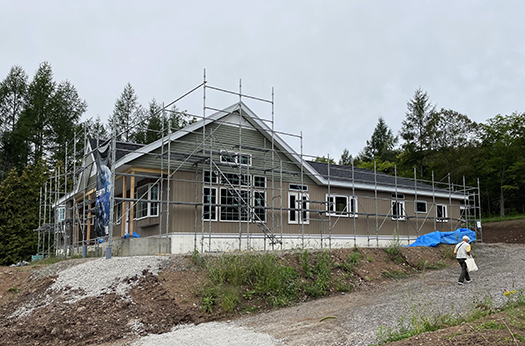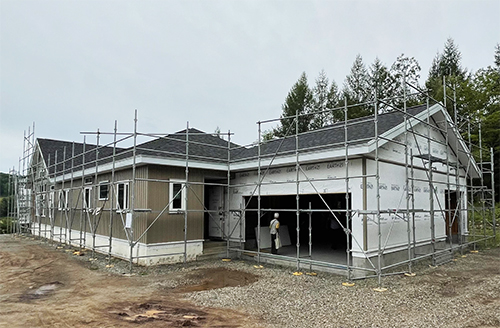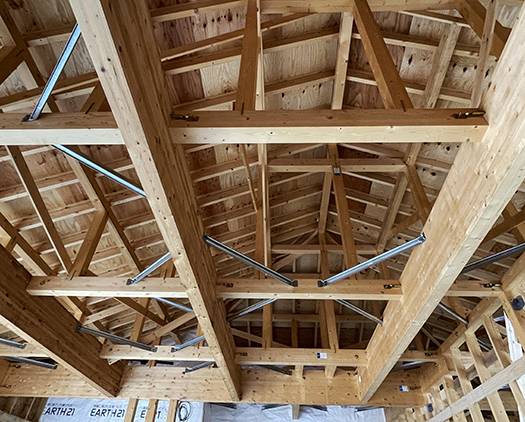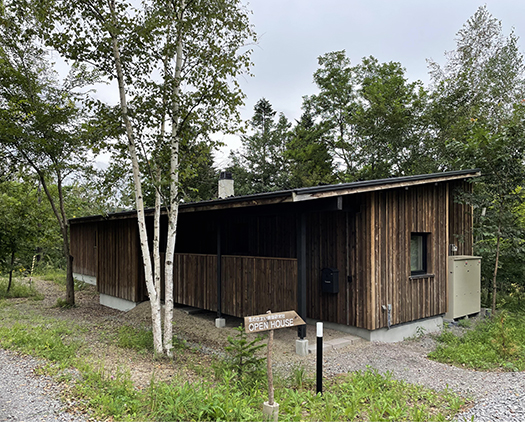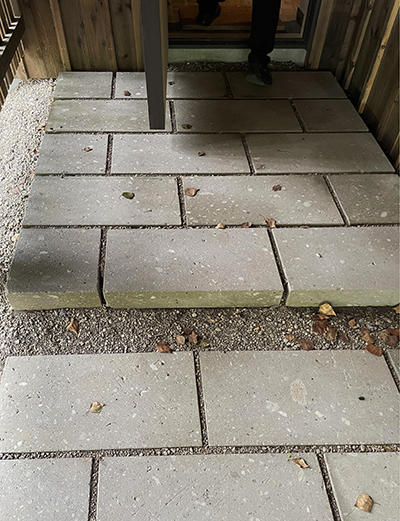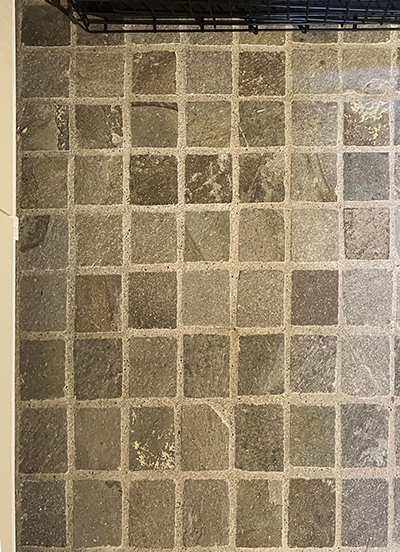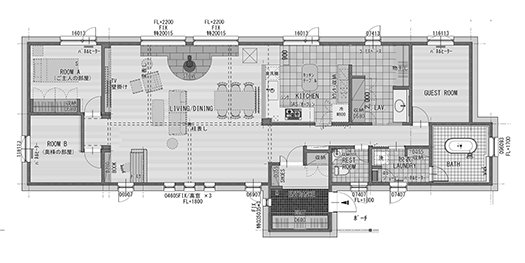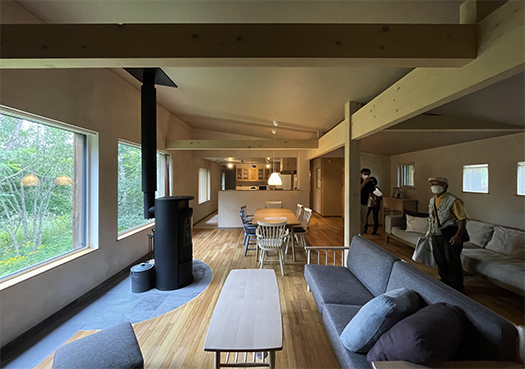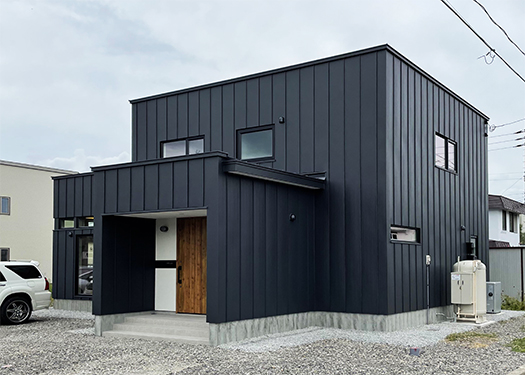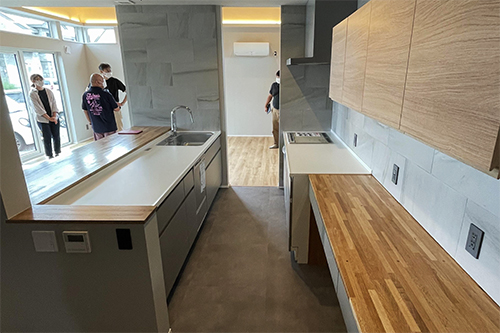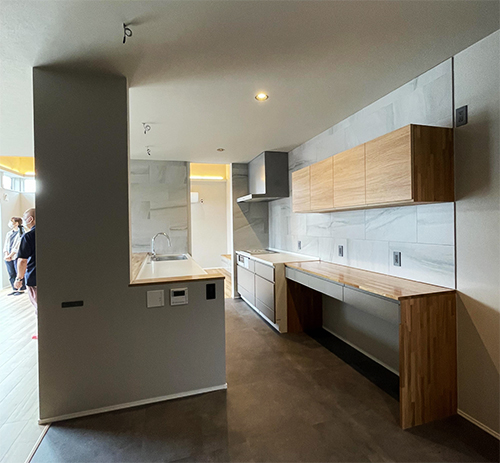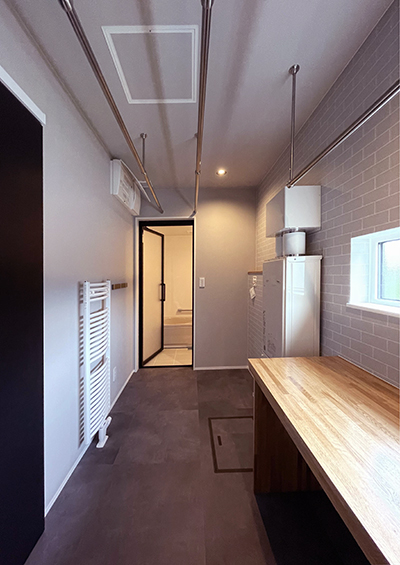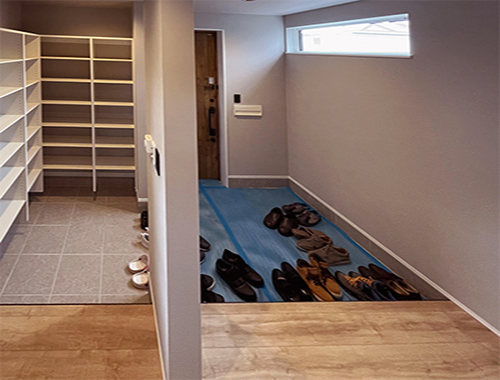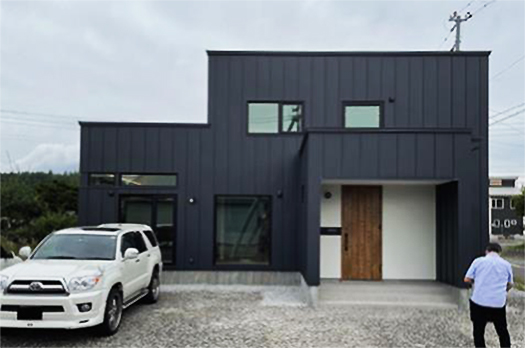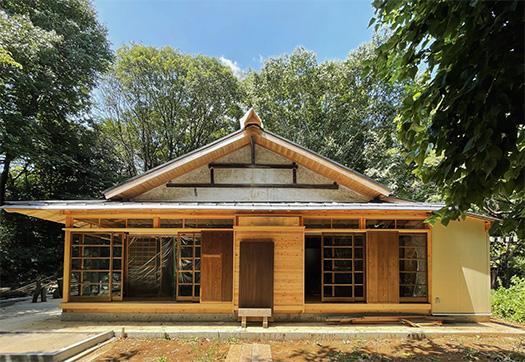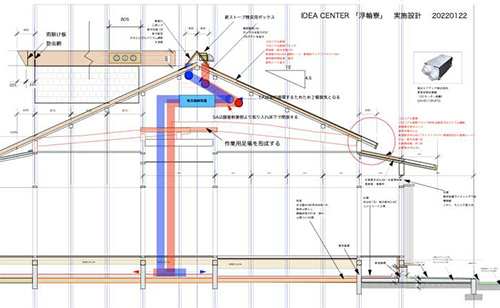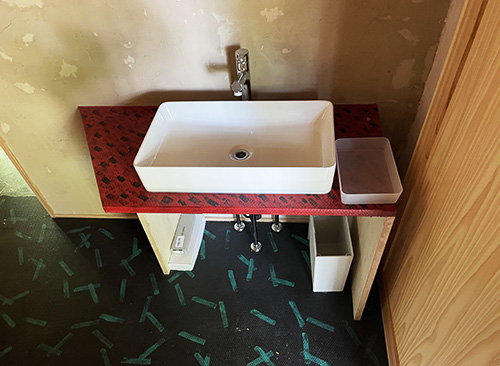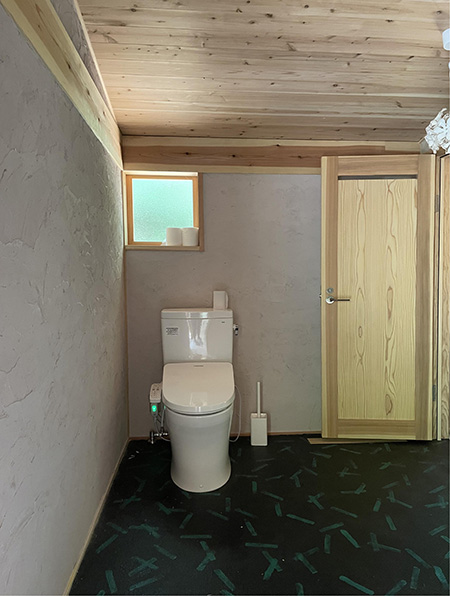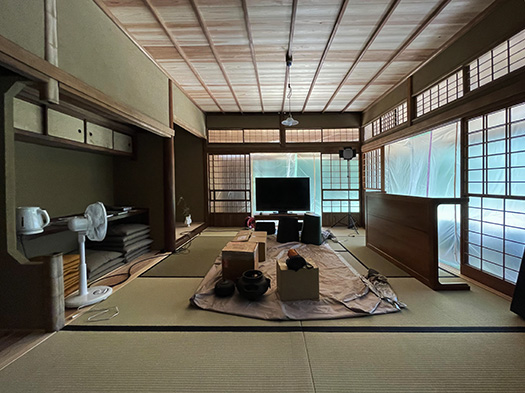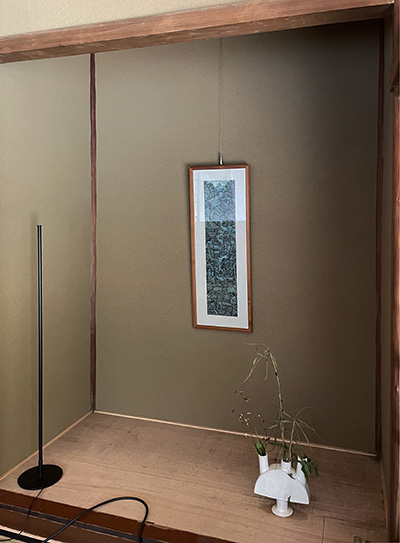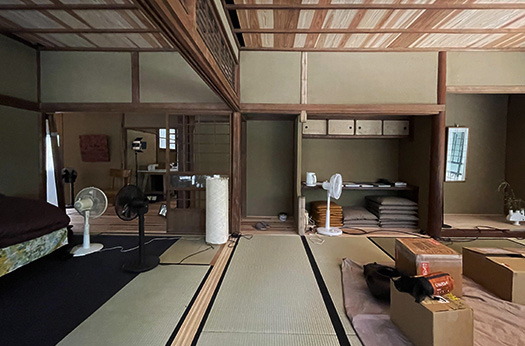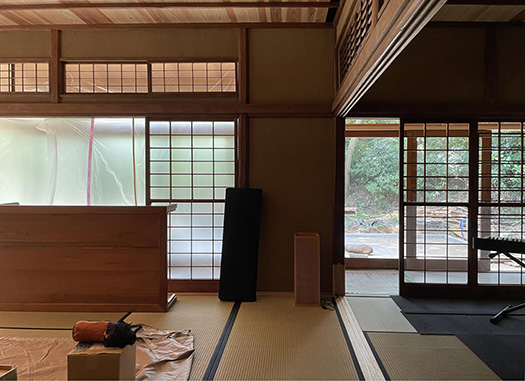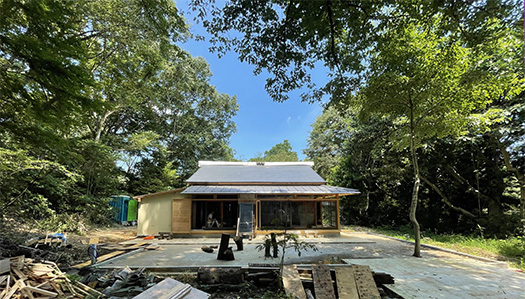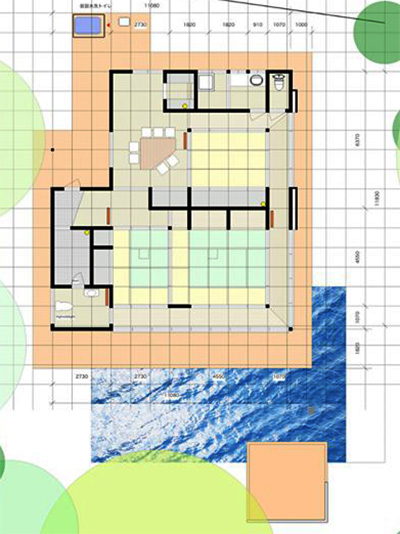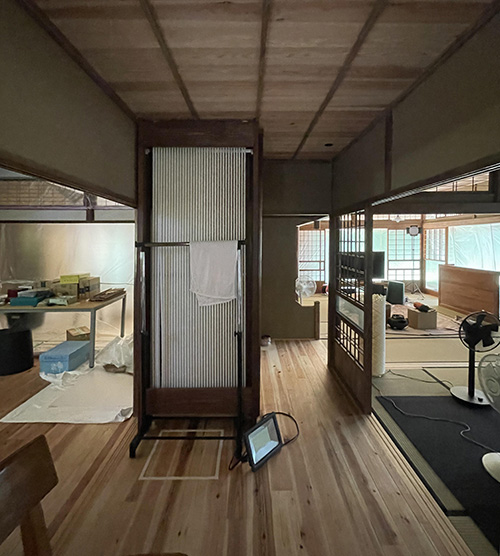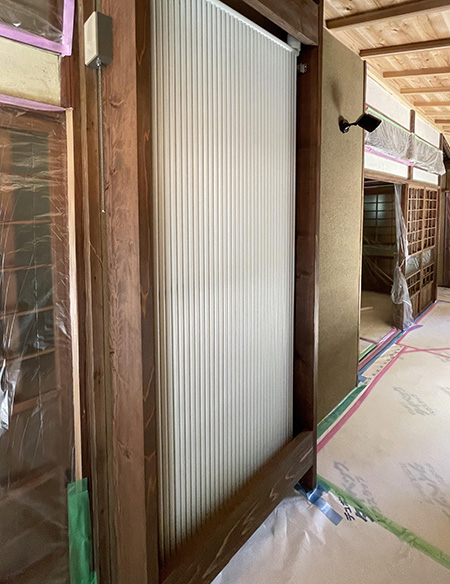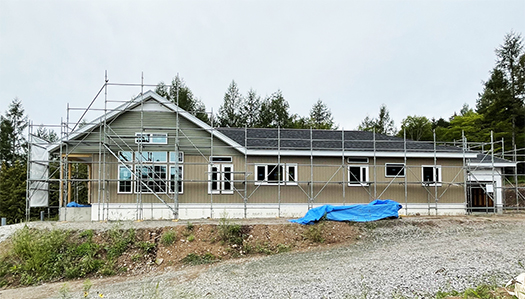
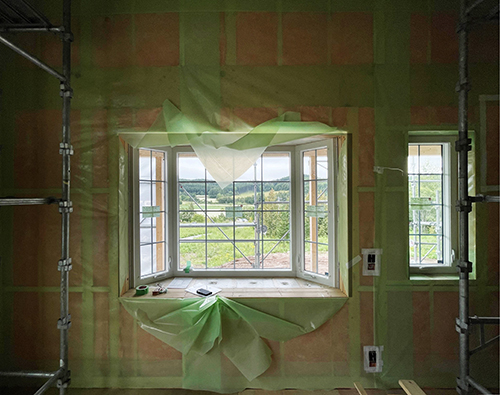

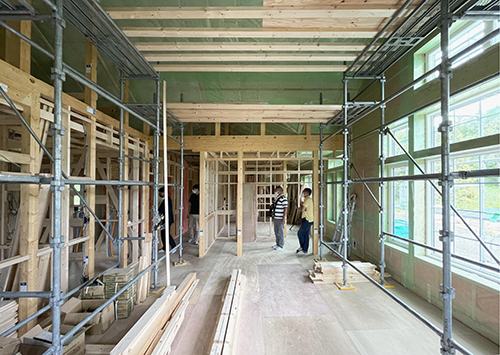
写真は北海道ハウジングさんの旭川近郊・東川の施工現場。
工事途中の現場見学ということで、室内の気密施工と換気の状況。
北海道ではこのような基盤技術的な共通仕様が固まっていて、
選択要素である断熱厚みについては柔軟な対応ができる。
防湿シートの安定的な施工技術があればあとは断熱レベルはコスト次第。
そしてそれはコストを含めたエネルギー選択の問題。・・・
先日、アメリカでも脱炭素の先端地域と言われるカリフォルニアで
この夏の猛暑、連日40度を超える状況の中で
「電気自動車(EV)への充電は避けるように」という注意報が発出された。
アメリカではバイデン政権は国内の石油資源利用について
非常に抑制的な政策で、結果シェールガス生産が抑制されている。
そのタイミングでロシアのウクライナ侵攻で世界的エネルギー危機。
バイデン政権は自国ではSDGs政策を進めているが
世界の資本主義の盟主としてはエネルギー価格高騰は防ぎたいという
政策的ジレンマの中に置かれている。
感染症への対応で積極財政政策を取っていることも重なって
物価高騰レベルがハンパなく、中間選挙で現政権はキビシイ状況。
エネルギー戦略の舵取りというのは非常に難しい。
エネルギー選択では徐々に自然エネルギー依存が強まっているけれど、
生活インフラがクルマEV化に舵を切っていくなかでアメリカ国民に
「電気自動車(EV)への充電は避けるように」
ということでは将来的にも暮らし方自体、非常にキビシイ。
ヨーロッパでも問題は同様で、世界の未来対応は非常にセンシティブ。
この問題は世界共通であり北海道の暮らしに直結するテーマ。
エネルギーについては世の動きに対応して行くしかないと思うけれど
住宅建築では建て主の未来の生活基盤に係わってくる問題であり
無自覚にはいられない。選択はしていかなければならない。
北海道の広大な自然環境の良さを暮らしのメリットと感じるためには
やはりクルマの利便性への依存は避けられない。そのエネルギー基盤として
自家消費としての太陽光発電は合理的だけれど、
北海道の日本海側・北部では冬の多雪時期に稼働率が大幅に下がったり、
あるいは一時的に「途絶」するのでは生活インフラたり得ない。
「きょうは大雪でお日様も隠れているので、暮らしもお休み」
と言うワケにはいかない。命にすら関わる。
感染症とウクライナの情勢は、建築にも資材高騰に結果しているが
いまの時代は長いスパンでの選択には難しい時代なのだと思わされる。
必ずしも平和な環境とばかり見通しにくい未来展望の中で
わが家のエネルギー将来像をどう描いたらいいのか、
ひとりひとりに選択を突き付けられてもいると思う次第。
English version⬇
Energy Choices for Cold Weather Homes Asahikawa2022Home Building Exploration-6
A “avoid electric vehicle (EV) charging” warning was issued in California this summer. Energy choices for living are not waiting. …
The photo shows Hokkaido Housing’s construction site in Higashikawa, near Asahikawa.
This is an onsite visit during construction, and shows the airtight construction and ventilation of the interior.
In Hokkaido, common specifications for basic technology like this have been established.
The insulation thickness, which is a factor of choice, can be flexibly adjusted.
Once a stable construction technique for moisture-proof sheets is in place, the insulation level depends on the cost.
And it is a matter of energy selection, including cost. ・・・・.
I was recently in California, one of the leading decarbonized regions in the United States.
In the midst of this summer’s heat wave, with temperatures exceeding 40 degrees Celsius every day
A warning was issued to avoid charging electric vehicles (EVs).
In the U.S., the Biden administration has been very restrained in its use of domestic petroleum resources.
The Biden administration has been very restrained in its use of domestic oil resources, and as a result, shale gas production has been curbed.
At the same time, Russia invaded Ukraine, causing a global energy crisis.
The Biden administration is pursuing SDGs policies at home, but
But as the world’s capitalist ally, it wants to prevent energy prices from skyrocketing.
The Biden administration is caught in a policy dilemma.
Combined with its aggressive fiscal policy in response to infectious diseases
The current administration is in a difficult situation due to the mid-term elections, as the level of price hikes has been unacceptable.
The energy strategy is very difficult to steer.
Although energy choices are gradually becoming more and more dependent on renewable energy sources, the infrastructure for daily life is shifting to EVs for cars.
As the infrastructure for daily life is shifting toward EVs, the American people are being asked to “recharge their batteries for electric vehicles (EVs)” and to “take advantage of the new energy sources.
“Avoid charging electric vehicles (EVs).
This is a very difficult situation for the future of our way of life.
The problem is the same in Europe, and the world’s response to the future is extremely sensitive.
This issue is universal and directly related to the way of life in Hokkaido.
As for energy, I think we have no choice but to respond to the world’s trends.
However, in the case of residential construction, it is an issue that will affect the future infrastructure of the owner’s life.
We cannot be unaware of it. We must make choices.
In order to feel the benefits of Hokkaido’s vast natural environment
we must depend on the convenience of the car as the energy base. As an energy infrastructure, solar power generation for private consumption is a rational choice.
Solar power generation for private consumption is reasonable.
However, in the Sea of Japan side and the northern part of Hokkaido, the operation rate drops drastically during the heavy snowfall in winter, or is temporarily “interrupted”.
However, if the operation rate drops drastically or is temporarily interrupted during the heavy snowfall in winter in the Sea of Japan side and northern part of Hokkaido, it cannot be considered as a living infrastructure.
It is not enough to say, “Today is a heavy snowfall and the sun is hiding from us, so our daily life is closed.
It is not enough to say, “Today is a heavy snow day and the sun is hiding from us, so our lives are on the line. It is even life-threatening.
Infectious diseases and the situation in Ukraine have resulted in a sharp rise in the cost of materials for construction.
The current situation makes us think that it is difficult to make choices in the long run.
In a future that is not necessarily peaceful, how do we envision the energy future for our homes?
How should we envision our family’s energy future?
I believe that each and every one of us is faced with a choice.
Posted on 9月 8th, 2022 by 三木 奎吾
Filed under: 住宅マーケティング, 住宅性能・設備 | No Comments »


